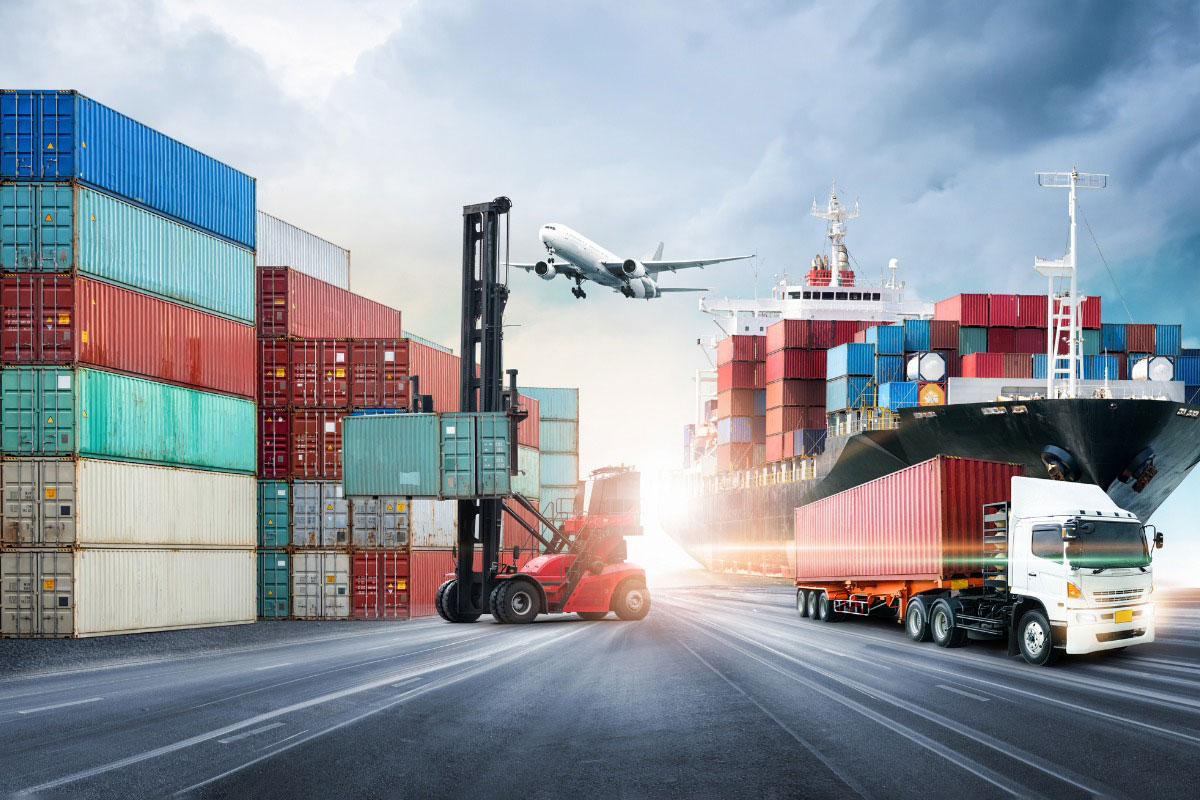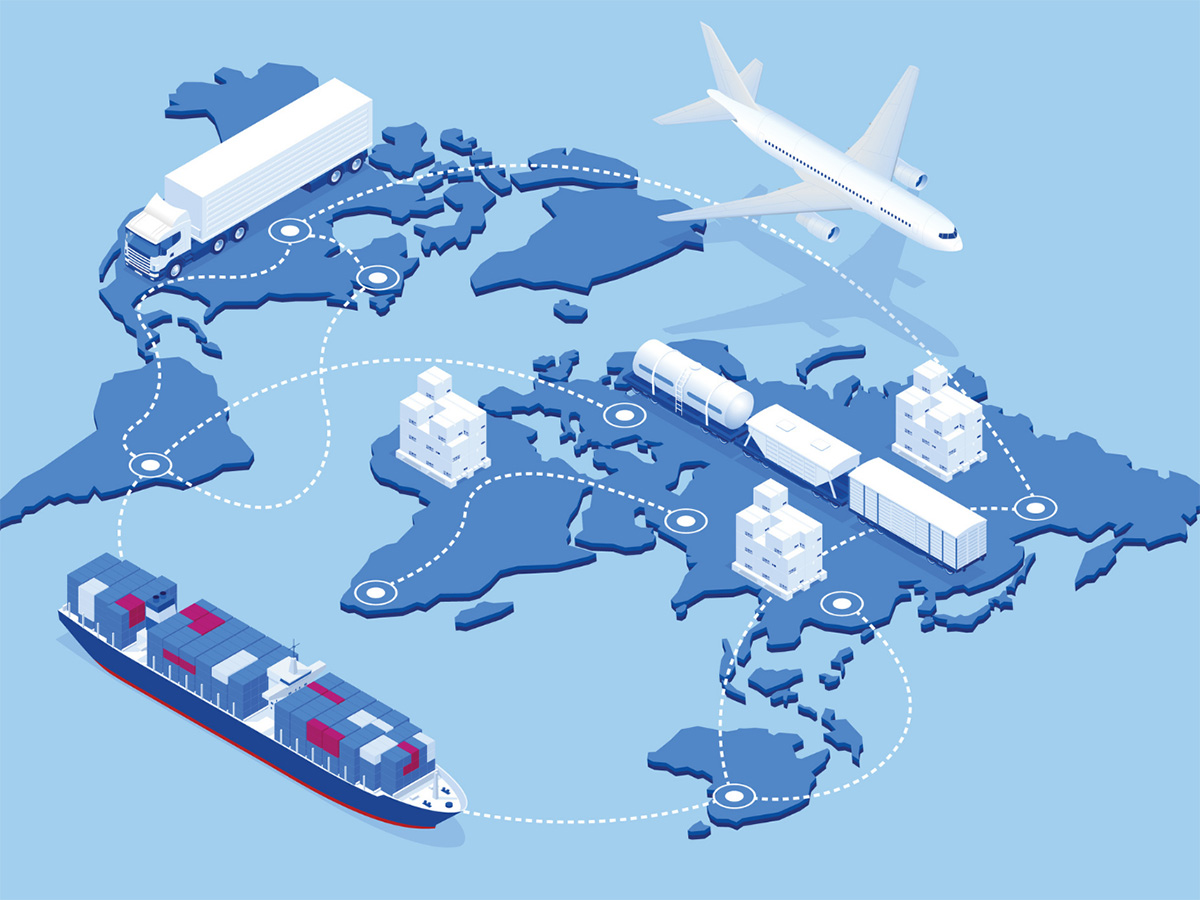

Finance
What Is A Bottleneck In The Supply Chain?
Published: October 19, 2023
Learn the definition and impacts of a bottleneck in the supply chain, and how it affects the financial aspect of a business. Discover strategies to mitigate bottlenecks and optimize your supply chain finance.
(Many of the links in this article redirect to a specific reviewed product. Your purchase of these products through affiliate links helps to generate commission for LiveWell, at no extra cost. Learn more)
Table of Contents
Introduction
The supply chain is a complex network of interconnected activities, processes, and stakeholders that enable the flow of goods and services from the point of origin to the point of consumption. It involves various stages, including sourcing, production, distribution, and customer fulfillment. A well-functioning supply chain is crucial for businesses to meet customer demands efficiently and effectively.
However, despite meticulous planning and execution, supply chains can encounter bottlenecks that hinder the smooth flow of operations. These bottlenecks can have a significant impact on the overall performance and profitability of a company.
In this article, we will explore the concept of a bottleneck in the supply chain, its causes, and the consequences it can have on a company’s operations. We will also discuss strategies for identifying and managing bottlenecks to optimize the supply chain’s efficiency.
Additionally, we will analyze real-life case studies to provide practical insights into how bottlenecks can arise in different supply chain scenarios and the steps taken to overcome them.
Understanding and effectively addressing bottlenecks in the supply chain is essential for companies seeking to improve their operational efficiency, reduce costs, and enhance customer satisfaction. By implementing the right strategies and tools, businesses can mitigate the impact of bottlenecks and achieve a streamlined supply chain that supports their overall success.
Definition of a Bottleneck in the Supply Chain
A bottleneck in the supply chain refers to a point or process within the network where the flow of goods, information, or resources is constrained, causing delays and disruptions to the overall operation. It acts as a restricting factor that limits the capacity of the entire supply chain, leading to inefficiencies, increased lead times, and reduced customer satisfaction.
Think of a bottleneck as a narrow section of a highway that slows down the traffic flow. In the supply chain context, it can occur at various stages, such as manufacturing, transportation, warehousing, or even at key decision-making points. The specific location of a bottleneck can vary across industries and organizations.
A bottleneck can result from different factors, ranging from limited physical capacity to process inefficiencies or unforeseen events. It may manifest as a shortage of resources, a bottleneck machine or equipment, a lack of skilled labor, or even an inefficient coordination between different supply chain partners.
When a bottleneck occurs, it creates a backlog of work, causing delays and disruptions throughout the supply chain. This can result in increased lead times, higher costs, stockouts, and low customer satisfaction. It is crucial for companies to identify and alleviate bottlenecks to maintain a smoothly functioning supply chain.
Identifying a bottleneck requires a detailed analysis of the supply chain processes and a thorough understanding of the dependencies and interconnections between different stages. With this knowledge, companies can implement targeted strategies and solutions to alleviate bottlenecks and improve overall supply chain performance.
Effective management of bottlenecks involves balancing the flow of resources, optimizing operations, enhancing communication between stakeholders, and employing technology to automate processes and increase efficiency. By addressing bottlenecks, companies can enhance their competitive advantage, drive profitability, and deliver superior customer value.
Causes of Bottlenecks in the Supply Chain
A bottleneck in the supply chain can emerge from various factors, both internal and external to the organization. Understanding the causes of bottlenecks is crucial for effective management and prevention. Here are some common causes:
- Insufficient capacity: One of the primary causes of bottlenecks is when the capacity of a particular process or resource is limited, unable to meet the demand. This can occur due to lack of equipment, space, or skilled labor.
- Poor coordination: Inefficient coordination between different stages of the supply chain can lead to bottlenecks. This can happen when communication and information sharing are lacking, causing delays and disruptions.
- Unforeseen events: Unpredictable events such as natural disasters, supplier bankruptcies, or labor strikes can create bottlenecks in the supply chain. These unexpected disruptions can disrupt the smooth flow of operations and lead to delays.
- Inaccurate forecasting: Inaccurate demand forecasting can result in bottlenecks. If a company overestimates demand, it may invest in excessive inventory or production capacity, leading to a bottleneck. Conversely, underestimating demand can result in stockouts and delays.
- Process inefficiencies: Inefficient processes within the supply chain can contribute to bottlenecks. These inefficiencies could be caused by complex or convoluted procedures, inadequate technology utilization, or poor workflow design.
- Lack of flexibility: A lack of flexibility in the supply chain can make it difficult to adapt to sudden changes in demand or unforeseen events. When the supply chain lacks agility, it becomes more vulnerable to bottlenecks and disruptions.
- Supplier issues: Problems with suppliers, such as late deliveries, quality issues, or lack of transparency, can create bottlenecks in the supply chain. Dependence on a single supplier without a backup plan can amplify the impact of supplier-related bottlenecks.
- Inventory mismanagement: Poor inventory management practices, such as excessive stock levels, stockouts, or improper handling of perishable goods, can lead to bottlenecks. These issues can arise from inaccurate demand forecasting or inadequate inventory tracking systems.
Identifying the specific causes of bottlenecks within a supply chain requires a comprehensive analysis of the processes, resources, and external factors influencing operations. By understanding the underlying causes, companies can implement targeted strategies and mitigation plans to address bottlenecks and maintain a smoothly functioning supply chain.
Impact of Bottlenecks on the Supply Chain
Bottlenecks in the supply chain can have far-reaching consequences that affect the overall performance and profitability of a company. Understanding the impact of bottlenecks is crucial for businesses to prioritize their mitigation efforts. Here are some key impacts:
- Increased lead times: Bottlenecks can result in delays throughout the supply chain, leading to increased lead times. This can disrupt order fulfillment and impact customer satisfaction, especially in industries with high customer expectations for quick delivery.
- Higher costs: Bottlenecks can lead to increased operational costs. Additional resources may be needed to address the bottleneck, and expedited or alternative transportation methods may be required to meet delivery deadlines. This can strain budgets and erode profit margins.
- Reduced customer satisfaction: Delays caused by bottlenecks can result in dissatisfied customers. Late deliveries, stockouts, or inconsistent product availability can damage the relationship with customers and harm the company’s reputation.
- Missed business opportunities: Bottlenecks can hinder a company’s ability to seize new business opportunities. If the supply chain cannot respond quickly to market demands or changes, competitors may gain an edge, leading to lost sales and market share.
- Inventory issues: Bottlenecks can disrupt inventory management processes. Excessive inventory may accumulate at one stage of the supply chain, while shortages occur elsewhere. This imbalance can impact cash flow, storage costs, and increase the risk of obsolescence or wastage.
- Lower productivity: Bottlenecks can impede overall productivity and efficiency. Employees may be forced to address the bottleneck instead of focusing on value-added tasks, leading to decreased productivity and reduced output.
- Supply chain disruptions: A bottleneck in one part of the supply chain can have a ripple effect, causing disruptions in other areas. These disruptions can amplify the impact of bottlenecks and lead to further delays and inefficiencies.
- Loss of competitive advantage: In today’s fast-paced business environment, companies that cannot respond quickly to customer demands and market changes risk losing their competitive advantage. Bottlenecks can erode a company’s ability to deliver on time, adapt to customer needs, and maintain a competitive edge.
The overall impact of bottlenecks on the supply chain varies depending on the severity and duration of the bottleneck, as well as the industry and specific circumstances. By recognizing and addressing bottlenecks, companies can mitigate their impact, improve operational efficiency, enhance customer satisfaction, and maintain a competitive position in the market.
Identifying Bottlenecks in the Supply Chain
Identifying bottlenecks in the supply chain is a crucial step towards effective management and optimization. By pinpointing the specific areas that hinder the flow of operations, companies can implement targeted solutions to alleviate bottlenecks. Here are some key strategies for identifying bottlenecks:
- Data analysis: Utilize data analytics to examine key performance indicators (KPIs) and identify areas with consistent underperformance. Analyzing metrics like order cycle time, on-time delivery, inventory turnover, and capacity utilization can help uncover potential bottlenecks.
- Process mapping: Create a visual representation of the supply chain processes, including all activities, inputs, outputs, and dependencies. Process mapping helps identify complexities, redundancies, and potential bottlenecks in the flow of operations.
- Customer feedback: Actively seek feedback from customers to identify pain points and areas of dissatisfaction. Customers often provide valuable insights on delays, product availability issues, or overall service shortcomings, which can indicate bottlenecks in the supply chain.
- Collaboration and communication: Foster open communication and collaboration between supply chain partners, including suppliers, manufacturers, distributors, and retailers. Regular discussions and information sharing can help uncover bottlenecks and identify areas for improvement.
- Simulation and modeling: Use simulation and modeling techniques to evaluate different scenarios and identify potential bottlenecks. By simulating the supply chain under varying conditions and stress testing different processes, companies can identify weak points and plan for mitigation.
- Root cause analysis: Conduct a root cause analysis to determine the underlying factors contributing to bottlenecks. Identify the specific processes, resources, or events that trigger the bottleneck and analyze their impact on the overall supply chain.
- Technology utilization: Leverage supply chain management software, data analytics tools, and predictive modeling to identify bottlenecks. Automation and real-time data monitoring enable companies to track performance metrics and detect potential bottlenecks early on.
- Continuous monitoring: Implement a system for ongoing monitoring and evaluation of supply chain operations. Regularly review performance metrics and conduct periodic audits to identify emerging bottlenecks and address them proactively.
Identifying bottlenecks requires a proactive and comprehensive approach. By combining data analysis, process mapping, customer feedback, and effective communication, companies can gain insights into potential bottlenecks and take the necessary steps to optimize their supply chain and enhance overall efficiency.
Strategies for Managing Bottlenecks in the Supply Chain
Managing bottlenecks in the supply chain requires a proactive approach that addresses the root causes and implements targeted solutions. By implementing the following strategies, companies can effectively manage bottlenecks and improve the overall performance of their supply chain:
- Capacity planning: Conduct a thorough analysis of capacity requirements to ensure resources are aligned with demand. Identify potential bottlenecks in terms of equipment, space, and labor, and invest in additional capacity or adjust production schedules accordingly.
- Process optimization: Streamline processes and eliminate inefficiencies that contribute to bottlenecks. Conduct a comprehensive review of workflows, identify and eliminate bottlenecks at each stage, and implement process improvements to enhance productivity and reduce delays.
- Supplier collaboration: Strengthen relationships with suppliers and improve transparency and communication. Work closely with suppliers to anticipate potential disruptions, establish backup plans, and explore opportunities for joint process improvements.
- Demand forecasting: Implement accurate demand forecasting techniques to anticipate fluctuations in demand and adjust supply accordingly. This ensures that production and inventory levels are aligned with customer requirements, minimizing the risk of bottlenecks caused by stockouts or excess inventory.
- Invest in technology: Leverage advanced technology solutions such as supply chain management software, real-time data analytics, and automation to monitor operations, identify bottlenecks, and make data-driven decisions. Technology can help optimize processes, improve coordination, and enhance overall supply chain visibility.
- Supply chain agility: Foster a culture of agility and flexibility within the supply chain. This involves being prepared for unforeseen events, having backup plans in place, and adopting agile strategies like just-in-time manufacturing or dynamic routing to quickly respond to changes and mitigate bottlenecks.
- Continuous improvement: Implement a continuous improvement framework such as Lean or Six Sigma to systematically identify and address bottlenecks. Encourage a culture of innovation and cross-functional collaboration to drive ongoing process optimization and reduce bottlenecks.
- Collaborative forecasting and planning: Collaborate closely with customers, suppliers, and other stakeholders in the supply chain to align demand forecasts and plans. Sharing information and coordinating efforts can help prevent or mitigate bottlenecks by ensuring all parties are aligned and prepared.
It is important to note that managing bottlenecks is an ongoing process that requires monitoring, adjustment, and continuous improvement. By implementing these strategies, companies can minimize the impact of bottlenecks, optimize the flow of operations, and ensure a more efficient and resilient supply chain.
Case Studies of Bottlenecks in the Supply Chain
Let’s dive into two real-life case studies that illustrate the challenges and solutions in managing bottlenecks within the supply chain:
Case Study 1: Bottleneck in Manufacturing
An electronics manufacturing company experienced a bottleneck in their production line, leading to delays in meeting customer demand. Upon investigation, it was identified that the bottleneck was caused by a specific machine that had a limited production capacity compared to the rest of the line.
The company implemented several strategies to manage the bottleneck. Firstly, they increased the machine’s capacity by adding additional equipment and optimizing its utilization. They also implemented cross-training for employees to ensure multiple resources were available to operate the machine efficiently.
Furthermore, the company leveraged data analytics and real-time monitoring to identify patterns and predict fluctuations in demand. By proactively adjusting the production schedule based on demand forecasts, they were able to optimize the machine’s throughput and better manage the bottleneck.
Case Study 2: Bottleneck in Transportation
A logistics company faced a bottleneck in transportation due to poor coordination between different carriers and lack of visibility into shipping statuses. This resulted in delays, missed delivery deadlines, and dissatisfied customers.
To address the bottleneck, the company implemented a transportation management system (TMS) that enabled real-time tracking and monitoring of shipments from multiple carriers. This provided visibility into the entire transportation process, allowing for better coordination and proactive issue resolution.
In addition, they improved communication and collaboration with carriers by implementing regular performance reviews and setting clear expectations. This helped in identifying and addressing any issues or delays early on.
With these measures in place, the logistics company successfully managed the transportation bottleneck, significantly reducing delays, improving delivery times, and enhancing customer satisfaction.
These case studies highlight the importance of understanding the specific causes of bottlenecks and implementing targeted strategies to overcome them. Each situation requires a customized approach, leveraging technology, process optimization, and collaboration to effectively manage bottlenecks and ensure the smooth flow of operations within the supply chain.
Conclusion
Bottlenecks in the supply chain can have a significant impact on a company’s operational efficiency, customer satisfaction, and profitability. Identifying and managing bottlenecks requires a proactive and strategic approach that addresses the root causes and implements targeted solutions.
In this article, we explored the concept of a bottleneck in the supply chain and its potential causes, impacts, and solutions. We discussed how bottlenecks can arise from factors such as limited capacity, poor coordination, unforeseen events, and process inefficiencies.
By implementing various strategies, such as capacity planning, process optimization, supplier collaboration, and technology utilization, companies can effectively manage bottlenecks and enhance the overall performance of their supply chain.
We also examined how case studies provide practical insights into the challenges faced and the solutions implemented to manage bottlenecks in real-world scenarios. From addressing manufacturing bottlenecks through increased capacity and demand forecasting to overcoming transportation bottlenecks with improved coordination and visibility, these case studies illustrate the importance of tailored approaches.
Ultimately, successfully managing bottlenecks in the supply chain requires continuous monitoring, adjustment, and a commitment to ongoing process improvement. By mitigating bottlenecks, companies can optimize their supply chain operations, improve customer satisfaction, reduce costs, and maintain a competitive advantage in their industry.
It is crucial for businesses to recognize the significance of managing bottlenecks proactively and allocate the necessary resources and efforts to minimize their impact. With a well-managed and optimized supply chain, companies can navigate challenges effectively, drive operational excellence, and create value for their customers and stakeholders.














